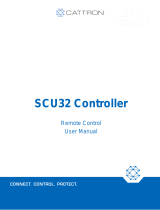
Documentation
KL2521
One Channel Pulse Train Output Terminals, RS422 / 24 V DC
2.1
2018-01-31
Version:
Date:


Table of contents
KL2521 3Version: 2.1
Table of contents
1 Foreword ....................................................................................................................................................5
1.1 Notes on the documentation........................................................................................................... 5
1.2 Safety instructions .......................................................................................................................... 6
1.3 Documentation issue status............................................................................................................ 7
2 Product overview.......................................................................................................................................8
2.1 KL2521-xxxx - Introduction ............................................................................................................. 8
2.2 KL2521-xxxx - Technical data ........................................................................................................ 9
2.3 Basic Function Principles................................................................................................................ 9
2.3.1 Ramp function..................................................................................................................10
2.3.2 Travel distance control.....................................................................................................11
2.3.3 Output pattern ..................................................................................................................12
3 Mounting and wiring ...............................................................................................................................13
3.1 Instructions for ESD protection ..................................................................................................... 13
3.2 Installation on mounting rails ........................................................................................................ 13
3.3 Installation instructions for enhanced mechanical load capacity .................................................. 17
3.4 Connection.................................................................................................................................... 17
3.4.1 Connection system...........................................................................................................17
3.4.2 Wiring...............................................................................................................................19
3.4.3 Shielding ..........................................................................................................................20
3.5 KL2521-xxxx - Connection and LED description .......................................................................... 21
3.6 ATEX - Special conditions (standard temperature range) ............................................................ 25
3.7 ATEX Documentation ................................................................................................................... 26
4 Configuration Software KS2000.............................................................................................................27
4.1 KS2000 - Introduction ................................................................................................................... 27
5 Access from the user program ..............................................................................................................29
5.1 Process data................................................................................................................................. 29
5.2 Register overview ......................................................................................................................... 30
5.3 Register description ...................................................................................................................... 31
5.4 Control and status byte................................................................................................................. 35
5.4.1 KL2521-0000, KL2521-0024 - Process data exchange ...................................................35
5.4.2 KL2521-0010 - Process data exchange...........................................................................36
5.4.3 Register communication...................................................................................................36
5.5 Examples of Register Communication.......................................................................................... 38
5.5.1 Example 1: reading the firmware version from Register 9 ...............................................38
5.5.2 Example 2: Writing to an user register.............................................................................38
6 Appendix ..................................................................................................................................................42
6.1 Support and Service ..................................................................................................................... 42

Table of contents
KL25214 Version: 2.1

Foreword
KL2521 5Version: 2.1
1 Foreword
1.1 Notes on the documentation
Intended audience
This description is only intended for the use of trained specialists in control and automation engineering who
are familiar with the applicable national standards.
It is essential that the documentation and the following notes and explanations are followed when installing
and commissioning these components.
It is the duty of the technical personnel to use the documentation published at the respective time of each
installation and commissioning.
The responsible staff must ensure that the application or use of the products described satisfy all the
requirements for safety, including all the relevant laws, regulations, guidelines and standards.
Disclaimer
The documentation has been prepared with care. The products described are, however, constantly under
development.
We reserve the right to revise and change the documentation at any time and without prior announcement.
No claims for the modification of products that have already been supplied may be made on the basis of the
data, diagrams and descriptions in this documentation.
Trademarks
Beckhoff
®
, TwinCAT
®
, EtherCAT
®
, Safety over EtherCAT
®
, TwinSAFE
®
, XFC
®
and XTS
®
are registered
trademarks of and licensed by Beckhoff Automation GmbH.
Other designations used in this publication may be trademarks whose use by third parties for their own
purposes could violate the rights of the owners.
Patent Pending
The EtherCAT Technology is covered, including but not limited to the following patent applications and
patents: EP1590927, EP1789857, DE102004044764, DE102007017835 with corresponding applications or
registrations in various other countries.
The TwinCAT Technology is covered, including but not limited to the following patent applications and
patents: EP0851348, US6167425 with corresponding applications or registrations in various other countries.
EtherCAT
®
is registered trademark and patented technology, licensed by Beckhoff Automation GmbH,
Germany
Copyright
© Beckhoff Automation GmbH & Co. KG, Germany.
The reproduction, distribution and utilization of this document as well as the communication of its contents to
others without express authorization are prohibited.
Offenders will be held liable for the payment of damages. All rights reserved in the event of the grant of a
patent, utility model or design.

Foreword
KL25216 Version: 2.1
1.2 Safety instructions
Safety regulations
Please note the following safety instructions and explanations!
Product-specific safety instructions can be found on following pages or in the areas mounting, wiring,
commissioning etc.
Exclusion of liability
All the components are supplied in particular hardware and software configurations appropriate for the
application. Modifications to hardware or software configurations other than those described in the
documentation are not permitted, and nullify the liability of Beckhoff Automation GmbH & Co. KG.
Personnel qualification
This description is only intended for trained specialists in control, automation and drive engineering who are
familiar with the applicable national standards.
Description of symbols
In this documentation the following symbols are used with an accompanying safety instruction or note. The
safety instructions must be read carefully and followed without fail!
DANGER
Serious risk of injury!
Failure to follow the safety instructions associated with this symbol directly endangers the
life and health of persons.
WARNING
Risk of injury!
Failure to follow the safety instructions associated with this symbol endangers the life and
health of persons.
CAUTION
Personal injuries!
Failure to follow the safety instructions associated with this symbol can lead to injuries to
persons.
Attention
Damage to the environment or devices
Failure to follow the instructions associated with this symbol can lead to damage to the en-
vironment or equipment.
Note
Tip or pointer
This symbol indicates information that contributes to better understanding.

Foreword
KL2521 7Version: 2.1
1.3 Documentation issue status
Version Comment
2.1 • KL2521-0010 added
2.0 • Migration
• Structure update
• Technical data updated
• Installation instructions for enhanced mechanical load capacity added
• Revision status updated
Firmware and hardware versions
Documentation
Version
KL2521-0000 KL2521-0010 KL2521-0024
Firmware Hardware Firmware Firmware Firmware Firmware
4F 08 4A 08 4F 4F
2.0 4F 08 4F 4F
The firmware and hardware versions (delivery state) of the terminal can be found in the serial number printed
on the side.
Syntax of the serial number
Structure of the serial number: WWYYFFHH
WW - week of production (calendar week)
YY – year of production
FF - firmware version
HH - hardware version
Example with ser. No.: 12 06 3A 02:
12 - week of production 12
06 - year of production 2006
3A - firmware version 3A
02 - hardware version 02

Product overview
KL25218 Version: 2.1
2 Product overview
2.1 KL2521-xxxx - Introduction
Fig.1: KL2521
1 Channel Pulse Train Output Terminal
The KL2521-xxxx output terminals change the frequency of a binary signal and output it (electrically isolated
from the K-bus). The frequency is preset by a 16 bit value from the automation device.
The output stage of the KL2521-0000 is RS422-compatible. The outputs can be used both for connection to
RS422 receivers and for the direct connection of an optocoupler (without external supply voltage) (default
mode).
The terminal KL2521-0010 contains additional outputs (230V
AC/DC
, 100mA) instead of the additional inputs
(+T, +Z) of the default variant.
The version KL2521-0024 was designed for connection to optocouplers (with external supply voltage). For
connection to inputs with a large input resistance, an external supply voltage (up to 24V) can be used
(active mode).
The Bus Terminals indicate their signal state by means of light emitting diodes. The LEDs are clocked with
the outputs and each displays an active output.

Product overview
KL2521 9Version: 2.1
2.2 KL2521-xxxx - Technical data
Technical Data KL2521-0000 KL2521-0010 KL2521-0024
Number of outputs 1 channel (2 differential outputs A, B)
KL2521-0010: 2 additional outputs 230V
AC/DC
, 100mA (+T, +Z)
Load type* Ohmic, optocoupler, differential inputs
Rated load voltage* 5V
DC
internal 5 V
DC
- 24V
DC
, external supply
Max. output current 50mA, RS485 specification max. 0.5A
Base frequency 100Hz ... 500kHz, default: 50kHz
Duty factor 50%
Resolution 16bits over one word in the fieldbus, 24bits usable altogether
Ramp calculation 2ms / step
Output cycle time 1ms (synchronous to K-bus)
Dead time 0.6ms after K-bus cycle
Number of inputs 2 (+T, +Z) - 2 (+T, +Z)
Input current 2.3mA to 2.8mA at 5V to 30V
Electrical isolation 500V (K-bus/field voltage output / input)
Current consumption from the K-bus typ. 50mA, max. 120mA (load-dependent)
Input process image 24bits (16bits input data, 8bits status)
Output process image 24bits (16bits output data, 8bits control)
Weight approx. 50g
Permissible ambient temperature
range during operation
0°C ... + 55°C
Permissible ambient temperature
range during storage
-25°C ... + 85°C
Permissible relative humidity 95%, no condensation
Dimensions (W x H x D) approx. 15mm x 100mm x 70mm (width aligned: 12mm)
Mounting [}13]
on 35mm mounting rail conforms to EN60715
Vibration/shock resistance conforms to EN 60068-2-6 / EN 60068-2-27,
see also installation instructions [}17] for terminals with enhanced mechanical load capacity
EMC immunity/emission conforms to EN61000-6-2/ EN61000-6-4
Protection class IP20
Installation position variable
Approval CE
ATEX [}25]
CULus
CE
CULus
*) dependent on the hardware version of the terminal, see chapter Connection [}22]
2.3 Basic Function Principles
The KL2521 output terminal generates a binary signal with a variable frequency. The peripheral side of the
electronics is electrically isolated from the internal K-bus, and therefore also from the fieldbus. The output
frequency can be adjusted. 16-bit values (signed integer) can be provided for this adjustment through the
controller's process image. These values modify the output frequency from zero up to a pre-selected
maximum frequency in equal increments -> there are 32767 (15bits) steps in each direction (right/left).
In contrast to the KL2521, on the KL2521-0010 terminal the two inputs +T and +Z are not available any
more. Instead of that, the KL2521-0010 is equipped with additional outputs.
The outputs T and Z can be set via the CONTROL byte (CONTROL.4 and CONTROL.5).
Afterwards, the signals can be read back from the terminal. They will be displayed in the STATUS byte and
transmitted directly to the PLC (STATUS.4 and STATUS.6).
The outputs are realized by MOSFET switches and can switch AC and DC voltages. The maximum current is
100mA. DC voltages can be switched positive and negative.
Process image
In the delivery state the KL2521 terminal occupies 3bytes in the process image. The mapping of the KL2521
can be set by means of the controller or by the Bus Coupler's configuration interface using the Beckhoff
KS2000 configuration software.

Product overview
KL252110 Version: 2.1
Operation modes
In addition to the FM (frequency modulation) operation mode, the KL2521 can also be used to control
stepper motors with pulse-direction control (frq. cnt pulse mode). Incremental encoder simulation is another
operation mode. It is possible to connect the terminal output directly to an incremental encoder input, with
which many servo drives and frequency converters are equipped.
Default setting
The KL2521 is set to FM mode by default, with a base frequency of 50kHz and a resolution of 15bits. The
number of pulses output is read back into a 16 bit register.
The counter overflows with a signal to the controller. This is displayed by Status.3 (overflow) or Status.2
(underflow). In parallel with these two bits, Status.6 is set as a general error bit. This makes the extension to
more than 16 bits easier for the control software to handle. The overflow can also be read from register 3
(internal 32-bit extension).
The counter can be cleared by Control.5. The clearing of the counter takes place
• on a rising edge if Feature.4 = 1 (default)
• This function is level-controlled if Feature.4 = 0.
If Bit Feature.10 = 1, Bit Control.5 sets the counter to a value specified by register R0 (low word) and register
1 (high word).
Resolution
The base frequencies are specified with their resolution of 1Hz per bit (GF1: registers 36, 37 or GF2:
registers 38, 39). The terminal operates internally at 16MHz with a resolution of 32bits. This corresponds to
a theoretical minimum step size of 0.0037Hz/step over the entire frequency range. The output stage allows
a maximum frequency of 500kHz to be output
2.3.1 Ramp function
The terminal offers a facility for soft starting and stopping. The ramp gradient for starting can be set in
register 40 with an accuracy of 10 or 1000Hz/s (Feature.6). Register 41 performs the same function for
stopping. The process data can be modified during transit of the ramp (Status.2), and the terminal then takes
the new value as its target frequency.
The internal ramp function increases / lowers the current frequency up to a preset maximum frequency
(register 2) with the preset parameters in register 40 / 41.
• The ramp function is activated with FeatureBit.5.
• The ramp base frequency is specified with FeatureBit.6.
• Status.1 is set while a ramp is being followed.
The deactivation of this function causes the release of Control.0. During operation this can also be done by
Control.1. The user can change the base frequency quickly during operation with this.
• If Control.0 = 1 (confirmation by Status.0), the values in registers 38/39 are used.
• If Control.0 = 0, the values in registers 36/37 are used.
The input signals T and Z are transferred directly from the terminal to the controller in the status byte
(Status.4 / Status.5). The signals are not given any internal pre-processing.

Product overview
KL2521 11Version: 2.1
2.3.2 Travel distance control
If the travel distance control function is active (Feature.9), then a rising edge at Control.2 will result in drive to
a fixed counter value. This value must previously be entered in register 0 (low word) and in register 1 (high
word) at runtime.
Time t1 is specified by the ramp time constant in register 40.
The time t2 is driven through at the maximum frequency f1 (register 2).
Time t3 is determined by the ramp time constant in register 41 with which the slowing down frequency f2
(register 43) is achieved.
The specified counter value is reached on expiry of t5. The terminal switches the frequency to zero.
In order to travel to a destination with precision, it is necessary that the time constant for the falling ramp is
greater than that of the rising ramp by a certain factor. This is necessary so that the slowing down frequency
is reached before the final counter state, so that the terminal does not drive up to the end point at full speed.
To explain in more detail: the KL2521 calculates the number of steps that are still to be taken in time t2 from
time t1 and from the number of steps that have been taken. The calculation for stopping assumes the same
number of steps as that found for starting up. The downward ramp must be a little steeper, approx. 10%, so
that it is possible to reach the destination exactly in the remaining time t3 + t4 + t5. This relationship changes
with the maximum frequency.
Fig.2: Phases of the travel distance control

Product overview
KL252112 Version: 2.1
2.3.3 Output pattern
The pulse pattern is output through channels A and B. The operation mode is configured with the feature
register R32.
The operation modes differ primarily between the positive logic (modes 0, 1, 2) and the negative logic
(modes 4, 5, 6).
Operation modes 2 and 6 simulate an incremental encoder and enable the direct connection of an evaluation
unit. This also includes a servo drive or a frequency converter with an incremental encoder input.
Operating mode Function
Clockwise rotation Counter clockwise
rotation
Frequency modulation
positive logic (BA0)
Pulse-direction control
positive logic (BA1)
Incremental encoder
positive logic (BA2)
Frequency modulation
negative logic (BA4)
Pulse-direction control
negative logic (BA5)
Incremental encoder
negative logic (BA6)

Mounting and wiring
KL2521 13Version: 2.1
3 Mounting and wiring
3.1 Instructions for ESD protection
Attention
Destruction of the devices by electrostatic discharge possible!
The devices contain components at risk from electrostatic discharge caused by improper
handling.
ü Please ensure you are electrostatically discharged and avoid touching the contacts of
the device directly.
a) Avoid contact with highly insulating materials (synthetic fibers, plastic film etc.).
b) Surroundings (working place, packaging and personnel) should by grounded probably,
when handling with the devices.
c) Each assembly must be terminated at the right hand end with an EL9011 bus end cap,
to ensure the protection class and ESD protection.
Fig.3: Spring contacts of the Beckhoff I/O components
3.2 Installation on mounting rails
WARNING
Risk of electric shock and damage of device!
Bring the bus terminal system into a safe, powered down state before starting installation,
disassembly or wiring of the Bus Terminals!

Mounting and wiring
KL252114 Version: 2.1
Assembly
Fig.4: Attaching on mounting rail
The Bus Coupler and Bus Terminals are attached to commercially available 35mm mounting rails (DIN rails
according to EN60715) by applying slight pressure:
1. First attach the Fieldbus Coupler to the mounting rail.
2. The Bus Terminals are now attached on the right-hand side of the Fieldbus Coupler. Join the compo-
nents with tongue and groove and push the terminals against the mounting rail, until the lock clicks
onto the mounting rail.
If the Terminals are clipped onto the mounting rail first and then pushed together without tongue and
groove, the connection will not be operational! When correctly assembled, no significant gap should
be visible between the housings.
Note
Fixing of mounting rails
The locking mechanism of the terminals and couplers extends to the profile of the mounting
rail. At the installation, the locking mechanism of the components must not come into con-
flict with the fixing bolts of the mounting rail. To mount the mounting rails with a height of
7.5mm under the terminals and couplers, you should use flat mounting connections (e.g.
countersunk screws or blind rivets).

Mounting and wiring
KL2521 15Version: 2.1
Disassembly
Fig.5: Disassembling of terminal
Each terminal is secured by a lock on the mounting rail, which must be released for disassembly:
1. Pull the terminal by its orange-colored lugs approximately 1cm away from the mounting rail. In doing
so for this terminal the mounting rail lock is released automatically and you can pull the terminal out of
the bus terminal block easily without excessive force.
2. Grasp the released terminal with thumb and index finger simultaneous at the upper and lower grooved
housing surfaces and pull the terminal out of the bus terminal block.
Connections within a bus terminal block
The electric connections between the Bus Coupler and the Bus Terminals are automatically realized by
joining the components:
• The six spring contacts of the K-Bus/E-Bus deal with the transfer of the data and the supply of the Bus
Terminal electronics.
• The power contacts deal with the supply for the field electronics and thus represent a supply rail within
the bus terminal block. The power contacts are supplied via terminals on the Bus Coupler (up to 24V)
or for higher voltages via power feed terminals.
Note
Power Contacts
During the design of a bus terminal block, the pin assignment of the individual Bus Termi-
nals must be taken account of, since some types (e.g. analog Bus Terminals or digital 4-
channel Bus Terminals) do not or not fully loop through the power contacts. Power Feed
Terminals (KL91xx, KL92xx or EL91xx, EL92xx) interrupt the power contacts and thus rep-
resent the start of a new supply rail.
PE power contact
The power contact labeled PE can be used as a protective earth. For safety reasons this contact mates first
when plugging together, and can ground short-circuit currents of up to 125A.

Mounting and wiring
KL252116 Version: 2.1
Fig.6: Power contact on left side
Attention
Possible damage of the device
Note that, for reasons of electromagnetic compatibility, the PE contacts are capacitatively
coupled to the mounting rail. This may lead to incorrect results during insulation testing or
to damage on the terminal (e.g. disruptive discharge to the PE line during insulation testing
of a consumer with a nominal voltage of 230V). For insulation testing, disconnect the PE
supply line at the Bus Coupler or the Power Feed Terminal! In order to decouple further
feed points for testing, these Power Feed Terminals can be released and pulled at least
10mm from the group of terminals.
WARNING
Risk of electric shock!
The PE power contact must not be used for other potentials!

Mounting and wiring
KL2521 17Version: 2.1
3.3 Installation instructions for enhanced mechanical load
capacity
WARNING
Risk of injury through electric shock and damage to the device!
Bring the Bus Terminal system into a safe, de-energized state before starting mounting,
disassembly or wiring of the Bus Terminals!
Additional checks
The terminals have undergone the following additional tests:
Verification Explanation
Vibration 10 frequency runs in 3 axes
6 Hz < f < 60 Hz displacement 0.35 mm, constant amplitude
60.1Hz<f<500Hz acceleration 5g, constant amplitude
Shocks 1000 shocks in each direction, in 3 axes
25 g, 6 ms
Additional installation instructions
For terminals with enhanced mechanical load capacity, the following additional installation instructions apply:
• The enhanced mechanical load capacity is valid for all permissible installation positions
• Use a mounting rail according to EN 60715 TH35-15
• Fix the terminal segment on both sides of the mounting rail with a mechanical fixture, e.g. an earth
terminal or reinforced end clamp
• The maximum total extension of the terminal segment (without coupler) is:
64 terminals (12 mm mounting with) or 32 terminals (24 mm mounting with)
• Avoid deformation, twisting, crushing and bending of the mounting rail during edging and installation of
the rail
• The mounting points of the mounting rail must be set at 5 cm intervals
• Use countersunk head screws to fasten the mounting rail
• The free length between the strain relief and the wire connection should be kept as short as possible. A
distance of approx. 10 cm should be maintained to the cable duct.
3.4 Connection
3.4.1 Connection system
WARNING
Risk of electric shock and damage of device!
Bring the bus terminal system into a safe, powered down state before starting installation,
disassembly or wiring of the Bus Terminals!
Overview
The Bus Terminal system offers different connection options for optimum adaptation to the respective
application:
• The terminals of ELxxxx and KLxxxx series with standard wiring include electronics and connection
level in a single enclosure.
• The terminals of ESxxxx and KSxxxx series feature a pluggable connection level and enable steady
wiring while replacing.

Mounting and wiring
KL252118 Version: 2.1
• The High Density Terminals (HD Terminals) include electronics and connection level in a single
enclosure and have advanced packaging density.
Standard wiring (ELxxxx / KLxxxx)
Fig.7: Standard wiring
The terminals of ELxxxx and KLxxxx series have been tried and tested for years.
They feature integrated screwless spring force technology for fast and simple assembly.
Pluggable wiring (ESxxxx / KSxxxx)
Fig.8: Pluggable wiring
The terminals of ESxxxx and KSxxxx series feature a pluggable connection level.
The assembly and wiring procedure is the same as for the ELxxxx and KLxxxx series.
The pluggable connection level enables the complete wiring to be removed as a plug connector from the top
of the housing for servicing.
The lower section can be removed from the terminal block by pulling the unlocking tab.
Insert the new component and plug in the connector with the wiring. This reduces the installation time and
eliminates the risk of wires being mixed up.
The familiar dimensions of the terminal only had to be changed slightly. The new connector adds about 3
mm. The maximum height of the terminal remains unchanged.
A tab for strain relief of the cable simplifies assembly in many applications and prevents tangling of individual
connection wires when the connector is removed.
Conductor cross sections between 0.08mm
2
and 2.5mm
2
can continue to be used with the proven spring
force technology.
The overview and nomenclature of the product names for ESxxxx and KSxxxx series has been retained as
known from ELxxxx and KLxxxx series.
High Density Terminals (HD Terminals)
Fig.9: High Density Terminals

Mounting and wiring
KL2521 19Version: 2.1
The Bus Terminals from these series with 16 terminal points are distinguished by a particularly compact
design, as the packaging density is twice as large as that of the standard 12mm Bus Terminals. Massive
conductors and conductors with a wire end sleeve can be inserted directly into the spring loaded terminal
point without tools.
Note
Wiring HD Terminals
The High Density (HD) Terminals of the ELx8xx and KLx8xx series doesn't support plug-
gable wiring.
Ultrasonically "bonded" (ultrasonically welded) conductors
Note
Ultrasonically “bonded" conductors
It is also possible to connect the Standard and High Density Terminals with ultrasonically
"bonded" (ultrasonically welded) conductors. In this case, please note the tables concern-
ing the wire-size width below!
3.4.2 Wiring
WARNING
Risk of electric shock and damage of device!
Bring the bus terminal system into a safe, powered down state before starting installation,
disassembly or wiring of the Bus Terminals!
Terminals for standard wiring ELxxxx/KLxxxx and for pluggable wiring ESxxxx/KSxxxx
Fig.10: Connecting a cable on a terminal point
Up to eight terminal points enable the connection of solid or finely stranded cables to the Bus Terminal. The
terminal points are implemented in spring force technology. Connect the cables as follows:
1. Open a terminal point by pushing a screwdriver straight against the stop into the square opening
above the terminal point. Do not turn the screwdriver or move it alternately (don't toggle).
2. The wire can now be inserted into the round terminal opening without any force.
3. The terminal point closes automatically when the pressure is released, holding the wire securely and
permanently.

Mounting and wiring
KL252120 Version: 2.1
See the following table for the suitable wire size width.
Terminal housing ELxxxx, KLxxxx ESxxxx, KSxxxx
Wire size width (single core wires) 0.08 ... 2.5mm
2
0.08 ... 2.5mm
2
Wire size width (fine-wire conductors) 0.08 ... 2.5mm
2
0,08 ... 2.5mm
2
Wire size width (conductors with a wire end sleeve) 0.14 ... 1.5mm
2
0.14 ... 1.5mm
2
Wire stripping length 8 ... 9mm 9 ... 10mm
High Density Terminals (HD Terminals [
}
18]) with 16 terminal points
The conductors of the HD Terminals are connected without tools for single-wire conductors using the direct
plug-in technique, i.e. after stripping the wire is simply plugged into the terminal point. The cables are
released, as usual, using the contact release with the aid of a screwdriver. See the following table for the
suitable wire size width.
Terminal housing High Density Housing
Wire size width (single core wires) 0.08 ... 1.5mm
2
Wire size width (fine-wire conductors) 0.25 ... 1.5mm
2
Wire size width (conductors with a wire end sleeve) 0.14 ... 0.75mm
2
Wire size width (ultrasonically “bonded" conductors) only 1.5mm
2
Wire stripping length 8 ... 9mm
3.4.3 Shielding
Note
Shielding
Encoder, analog sensors and actors should always be connected with shielded, twisted
paired wires.
Page is loading ...
Page is loading ...
Page is loading ...
Page is loading ...
Page is loading ...
Page is loading ...
Page is loading ...
Page is loading ...
Page is loading ...
Page is loading ...
Page is loading ...
Page is loading ...
Page is loading ...
Page is loading ...
Page is loading ...
Page is loading ...
Page is loading ...
Page is loading ...
Page is loading ...
Page is loading ...
Page is loading ...
Page is loading ...
Page is loading ...
-
 1
1
-
 2
2
-
 3
3
-
 4
4
-
 5
5
-
 6
6
-
 7
7
-
 8
8
-
 9
9
-
 10
10
-
 11
11
-
 12
12
-
 13
13
-
 14
14
-
 15
15
-
 16
16
-
 17
17
-
 18
18
-
 19
19
-
 20
20
-
 21
21
-
 22
22
-
 23
23
-
 24
24
-
 25
25
-
 26
26
-
 27
27
-
 28
28
-
 29
29
-
 30
30
-
 31
31
-
 32
32
-
 33
33
-
 34
34
-
 35
35
-
 36
36
-
 37
37
-
 38
38
-
 39
39
-
 40
40
-
 41
41
-
 42
42
-
 43
43
Beckhoff KL2521-0024 Documentation
- Type
- Documentation
- This manual is also suitable for
Ask a question and I''ll find the answer in the document
Finding information in a document is now easier with AI
Related papers
-
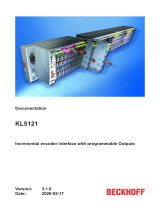 Beckhoff KL5121 Documentation
Beckhoff KL5121 Documentation
-
Beckhoff KL5101 Documentation
-
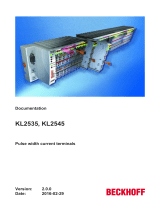 Beckhoff KL2545 Documentation
Beckhoff KL2545 Documentation
-
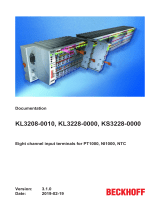 Beckhoff KS3228-0000 Documentation
Beckhoff KS3228-0000 Documentation
-
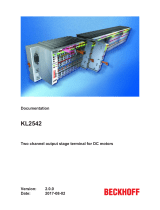 Beckhoff KL2542 Documentation
Beckhoff KL2542 Documentation
-
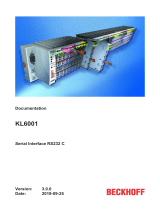 Beckhoff KL6001 Documentation
Beckhoff KL6001 Documentation
-
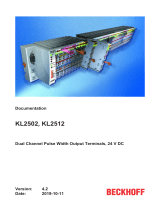 Beckhoff KL2502 Documentation
Beckhoff KL2502 Documentation
-
 Beckhoff KL3222 Documentation
Beckhoff KL3222 Documentation
-
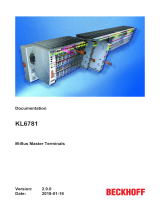 Beckhoff KL6781 Documentation
Beckhoff KL6781 Documentation
-
 Beckhoff KL2761 Documentation
Beckhoff KL2761 Documentation




















































